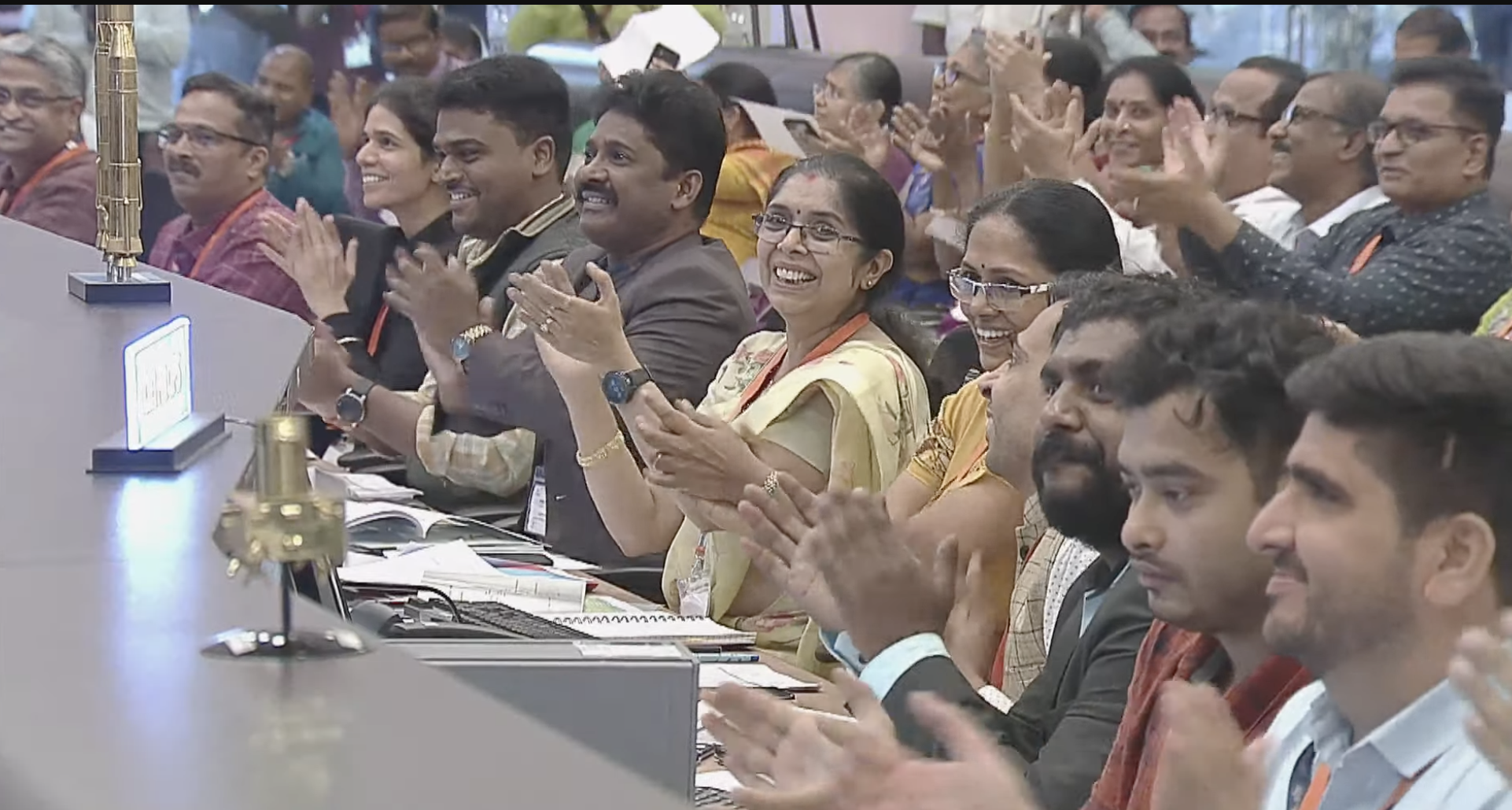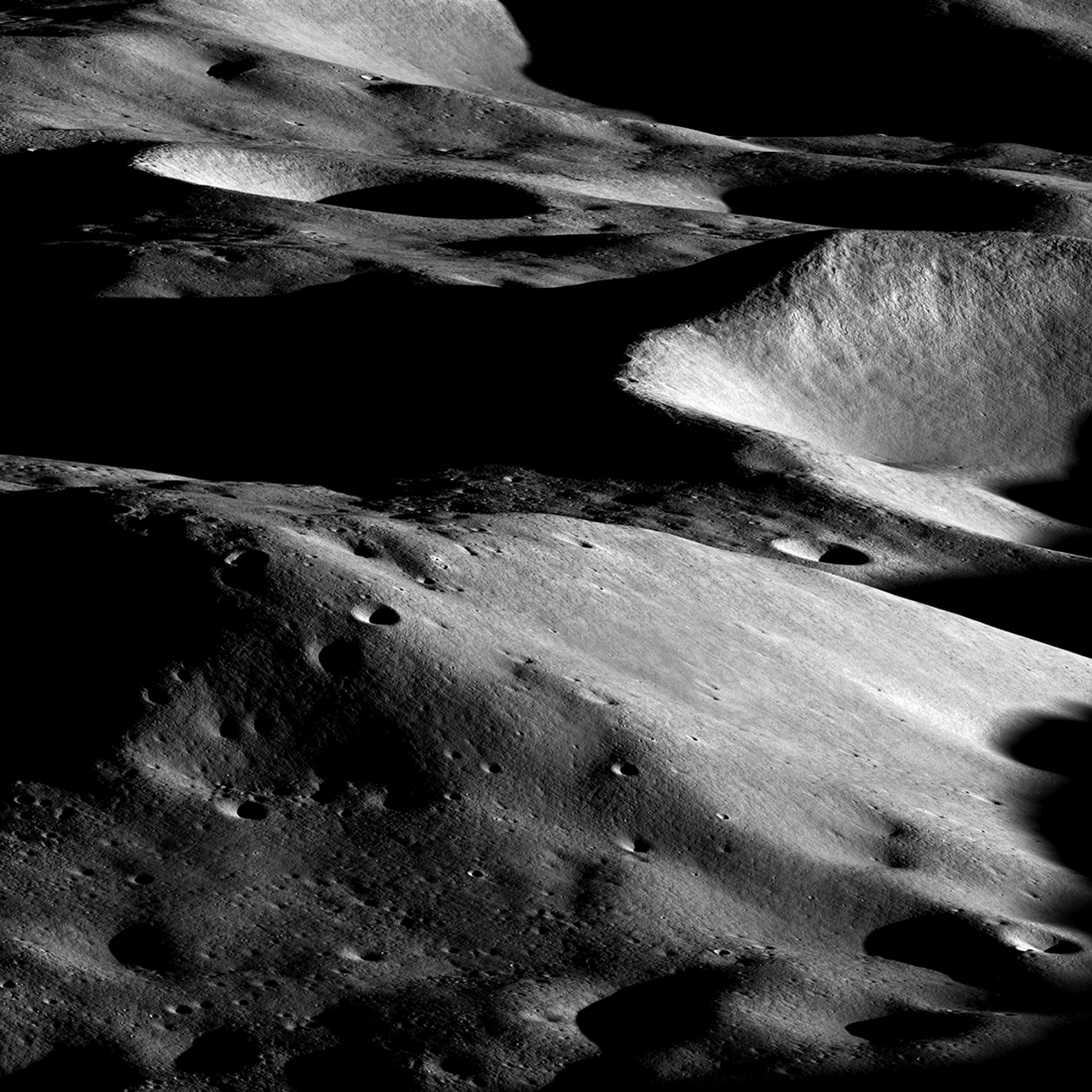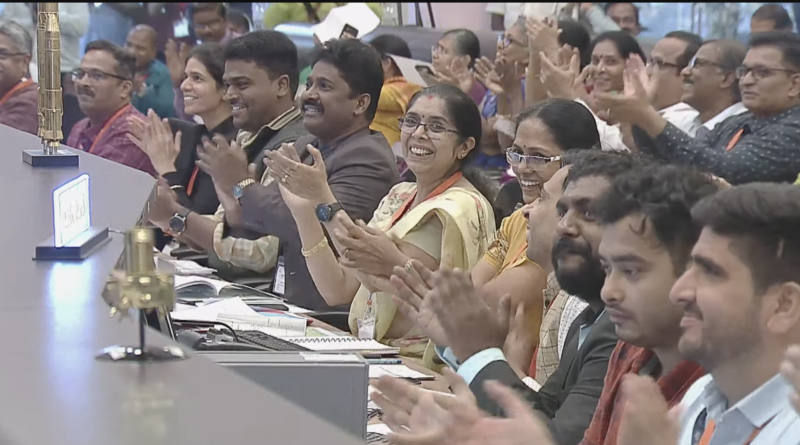India’s moon lander makes history as first to reach coveted south pole

India’s robotic spacecraft landed on the moon unscathed Wednesday, a historic achievement for the country’s growing space program.
The Chandrayaan-3 mission, which means “moon craft” in Hindi, is the first ever to touch down at the lunar south pole. Many nations and private ventures have set their sights on the region because of its ice, thought to be buried in the polar craters. The natural resource is coveted because it could supply drinking water, air, and rocket fuel for future missions, ushering a new era in spaceflight.
The success also means India joins the elite few — the former Soviet Union, United States, and China — who have landed a spacecraft on the moon. The victory comes four years after India’s predecessor, Chandrayaan-2, crashed attempting the same feat.
“On this joyous occasion, I would like to address all the people of the world, the people of every country and region: India’s successful moon mission is not just India’s alone,” said India’s Prime Minister Narendra Modi, who watched the livestream from Johannesburg, South Africa. “This success belongs to all humanity.”
India invited the world to watch alongside its mission control through a live broadcast of the event, synced with sunrise at the landing site, on Aug. 23. Mission control engineers and staff erupted in applause shortly after 8:30 a.m. ET as telemetry data confirmed the golden four-legged lander had made the journey to the surface.
About three hours later, the Indian Space Research Organization — India’s version of NASA — posted a moon photo taken by the lander with one of its legs in view.
“This will remain the most memorable and the happiest moment for all of us,” said Kalpana Kalahasti, the mission’s associate project director. “From the day we started rebuilding our spacecraft after Chandrayaan-2’s experience, it has been breathe-in-breathe-out Chandrayaan-3.”
India’s accomplishment follows mere days after the Russian space agency lost its Luna-25 robotic spacecraft, which had been orbiting the moon but apparently crashed after a botched flight maneuver. The dueling missions were both trying to set their crewless space probes down at the south polar region this week.
Over the next few years, the United States and China are each preparing to send astronauts to the lunar south pole, and a handful of robotic landers are slated for the remainder of this year or soon after. If the ice were able to be mined and processed, it could launch a new era for spaceflight, developing the moon as a refueling stop for deeper space travel.

Want more science and tech news delivered straight to your inbox? Sign up for Mashable’s Light Speed newsletter today.
Three private missions are scheduled to head to the moon through NASA’s Commercial Lunar Payload Services program, established in 2018 to recruit companies to deliver NASA cargo to the moon. Intuitive Machines has two missions slated this year, and Astrobotic has one, though it’s not clear when the latter will launch, due to problems with its rocket, the United Launch Alliance’s Vulcan Centaur.
The likelihood of success, especially for inexperienced space programs, is still slim. The Chandrayaan-3 is the first mission to make the journey all the way to the lunar surface this year out of three attempts. It is only the second nation to arrive safely on the moon this century.

About 60 years have passed since the first uncrewed moon landings, but touching down is still onerous, with less than half of all missions succeeding. The moon’s atmosphere is very thin, providing virtually no drag to slow a spacecraft down as it approaches the ground. Furthermore, there are no GPS systems on the moon to help guide a craft to its landing spot. Engineers have to compensate for these shortcomings from 239,000 miles away.
Over the past four years, the private sector and other spacefaring nations have tried and failed. An Israeli nonprofit and company collaborated in 2019 on the Beresheet mission, which crashed on the lunar surface after an orientation component failed. Just this April, Japanese startup ispace ran out of fuel on its descent and ultimately crashed.
But perhaps now there’s more hope.
“I’m confident that all countries in the world including those from the global south are capable of achieving such feats,” Modi said. “We can all aspire to the moon and beyond.”
